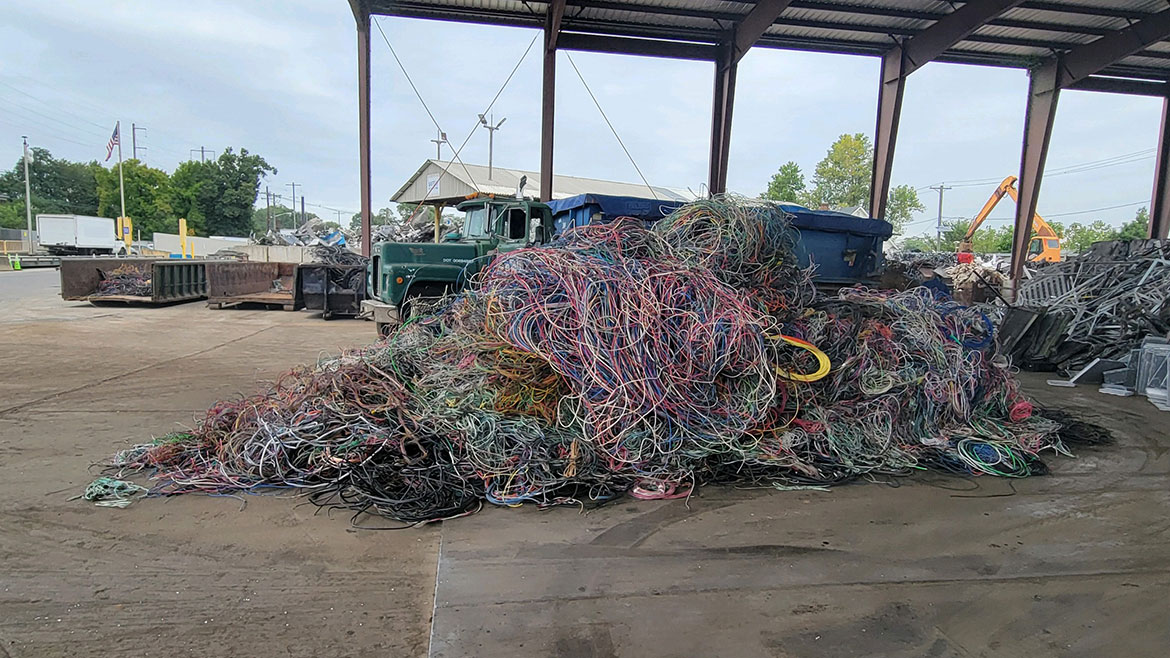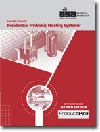Heating Perceptions | Scott Secor
Junkyard ruminations from a hydronic heating contractor
Careful what you drive over.

Junkyards are one of those forgotten places we in the heating business must visit on occasion.
All images courtesy of Scott Secor.
Junkyards are one of those forgotten places we in the heating business must visit on occasion.
My father’s first work vehicle was a station wagon he purchased from a neighbor. His first “real” truck was a used 1969 Ford E300 van, with three on the tree and a straight six-cylinder engine. Dad bought this van from Bell Telephone, and painted it with an air sprayer using Rust-Oleum paint in his driveway. He purchased a set of four brand-new Michelin heavy-duty tires for $400. He converted the shifter from the column to the floor with a Hurst shift kit, the shift lever was at least 24 inches long for those that remember manual shift vehicles.

A cardboard pile at a local New Jersey junkyard.
Once Dad’s “new” truck was on the road, he immediately wondered how he survived his first year without it. He booked a job that required removing and replacing a residential cast iron boiler. After installing the new boiler, he loaded the old boiler in the van, along with the old piping, pump, etc., and drove to the junkyard. He unloaded the old stuff out the back door, he drove to the scale and the lady handed him forty bucks. He was smiling ear to ear — he made money on his first installation and got $40 cash for the old boiler. Unfortunately, when he got home, he learned that three of the four of the brand-new tires were almost flat. You guessed it, something at the junkyard punctured the tires.
Today, we have a heavy-duty trailer that we occasionally use to pick up new large equipment or load with scrap metal and keep at our shop until full. For years, we used a “scrap man” that would come to the job sites and load his large flatbed truck with power tailgate (that always leaks hydraulic fluid all over the ground), then dispose of the metal at the end of each day before going home. Our scrap man retired, and we cannot find a reliable company, so we take care of most of the small stuff. On larger jobs, we will call in a larger firm or rent a scrap metal dumpster (from the same junkyard). The dumpster works out well, as we will often use a forklift or other type of lift to get the heavy metal into the container. Once the dumpster is full, we call the junkyard, and they send a truck to haul it and weigh it. We collect the money afterward.

Plumbing and HVAC contractors often need to haul scrap metal to local junkyards.
About a month ago, I slowly backed the trailer near the pile and when I got out of the truck and stood near the back of my trailer full of metal, I looked down at the ground. Apparently, the person that was in the spot before me must have had a truck full of brand new loose metal screws. There were 1/2-inch long sheet metal screws (called zip screws for years around here), 2-inch long sheetrock screws, and many other types of screws. When I saw one of the sheet metal screws caught in one of the trailer tire treads, I picked it out with my pocket knife. Based on what I saw, I was sure this was going to be a long and expensive day. Much to my surprise, not one of the eight tires was flat.

A scrap wire pile at a local New Jersey junkyard.
This morning, I pulled up to the shop and looked at our trailer, I noticed it was about one-third full. We need the trailer for an upcoming job, and it has to be empty. I jumped into my truck and backed up to the trailer and hooked it up to the truck. I then headed towards the junkyard which is about 15 minutes away. When I arrived, I pulled onto the scale and the lady weighed the truck and trailer, then waived me forward. I carefully backed the trailer up to the big pile of “light” iron. I immediately noticed there were hundreds of appliances, which included mostly washing machines, dryers and stoves. This time I was very careful not to back run over any metal chards, screws or debris. From a distance, these used appliances looked relatively new, say five or thereabouts. I rolled the two water heaters off the trailer. Then I threw the pumps and small pieces of pipe onto the pile. Next, I went to the cardboard area and threw about two dozen flattened boxes into that pile.

Scott Secor keeps a heavy-duty trailer that he occasionally uses to pick up new large equipment or load with scrap metal and keep at his shop until full.
For a change, I was not in a big hurry, so I sat there and looked around at all the piles in this junkyard. There must have been 20 or 30 piles. Many of the piles contained something different. There was a solid aluminum pile, an aluminum wire pile, a stainless steel pile, a copper wire pile, a cardboard pile, a few flight gauge steel piles, a vinyl siding pile, an aluminum siding pile, etc. There were many “heavy” iron piles (with small and large cast iron boilers, commercial steel boilers, steel pipe in every size up to 48 inches, cast iron pipe, cast iron engine blocks, cast iron radiators, etc.). They keep the copper, brass, high-grade stainless, nickel and other “precious” metals inside in smaller piles.
Most of the time, we visit these “heavy iron” piles and watch in awe as the machine (small crane) with electromagnet lifts very heavy pieces off our trailer. I have seen them lift well over 2 tons at one time from our trailer, and I suspect they could lift as much as 5 tons or more. Sometimes the operator will lift five things at once, other times he will lift one thing at a time. I suspect it depends on how heavy the items are and how much of a hurry the operator is in. I have heard stories of one of the crane operators dropping heavy items and blowing out springs in trucks and or trailers. Thankfully, this has never happened to us. However, if the new guy is operating the electromagnet, be careful as he has been known to lift trailers and/or trucks off the ground accidentally. A little scary when the bed of the pick-up truck starts to come off the ground when you’re sitting in the cab. This happened once, many years ago. Maybe it is a good thing my current pickup has an aluminum body, although the truck still has a steel frame.
I have heard stories of one of the crane operators dropping heavy items and blowing out springs in trucks and or trailers. Thankfully, this has never happened to us. However, if the new guy is operating the electromagnet, be careful as he has been known to lift trailers and/or trucks off the ground accidentally.
After staring at the piles and the dozen or so employees walking around or driving skid steers, forklifts and large machinery, I decided it was time to drive back on the scale. I went to walk to the window and the lady reminded me to stand on the scale so she could get the correct weight of me, the truck and the empty trailer. I walked up to the window and handed her my driver’s license (as required) under the thick plate glass window. About sixty seconds later she handed me my driver's license, a weight receipt from the scale and some cash. I collected $20 dollars for my scrap (340 pounds for those that care).
The best part is that I just checked the four tires on my truck and the four tires on my trailer, and none of them are hissing.
Looking for a reprint of this article?
From high-res PDFs to custom plaques, order your copy today!









